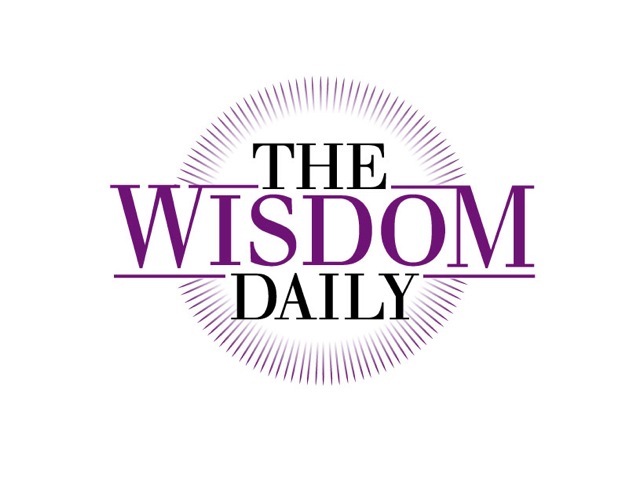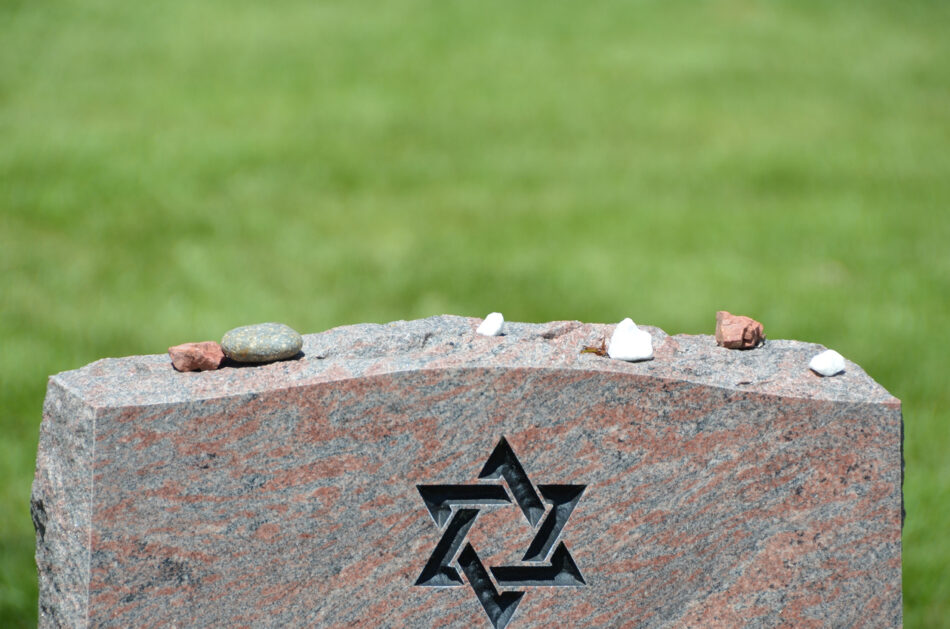In this week’s Torah portion, Parshat Vayakhel, we read about the building of the Mishkan, the wandering Tabernacle in the wilderness. While it may be an architect’s delight to explore this elaborate, detailed, bejeweled, and decorative building project, to be tactfully honest, it’s kind of a dry four-chapter narrative. It certainly lacks the human drama we often read about in Genesis and earlier in Exodus. But if we put this parasha in the context of the entire journey from Egypt, and bring to it some midrashic understanding, we can harvest Torah wisdom about our connection to the past, to the dead, and to the living.
As the Torah indicates, the holy Tabernacle is a sacred space in which we can be in communion with God. Built with beautiful artistry, in Ex. 39:32 we read: “Thus was completed all the work of the Tabernacle of the Tent of Meeting — mishkan ohel moed — as God had commanded Moses.” The Mishkan, with the Ark and Ten Commandments within, is now ready for ongoing travel in the wilderness of Sinai. However, Midrash on this Torah story tells us one essential detail is missing. What could that be?
At the very end of Genesis, Joseph says to his brothers: “I am dying, but God will take account of you and will bring you up from this land to the land he swore to Abraham, Isaac, and Jacob. When God takes account of you, bring my bones up from here” (Gen. 50:24-25). Genesis ends with this obituary notice: ”And Joseph died… They mummified him, and they put him in a coffin in Egypt.” (Gen. 50:26)
We next hear of Joseph’s bones as the Hebrews prepare to leave Egypt. For the second time, the Torah specifically mentions Joseph’s bones: “Now Moses had taken Joseph’s bones with him; for he had made the Children of Israel swear, yes swear, saying, God will take account, yes, account of you – so bring my bones up from here with you” (Ex. 13:19).
Here Midrash asks: “What did they do with Joseph’s bones while traveling through the Sinai desert?” This is not usually something we consider in telling the story of the Exodus and subsequent desert wanderings. But the Midrash fills in details of unknown, unclear, or confusing passages of Torah, indicating here: “During the entire forty years’ wanderings in the wilderness, the bones of Joseph traveled with them” (Midrash Exodus Rabbah 20:19). And further, we read in the Talmud, in Sotah 13a:
All those years that the Israelites were in the wilderness, those two chests, one of the dead and the other of the Shekhinah, proceeded side by side, and passersby used to ask: ‘What is the nature of those two chests?’ They received the reply: ‘One is of the dead and the other of the Shekhinah.’
Thus, we can assume the Mishkan serves a dual purpose: 1) to carry the Ark of the Covenant infused with the Presence of Shekhinah; and 2) to transport the ark containing Joseph’s bones. Throughout the Israelites’ forty-year journey in the desert wilderness, Joseph’s bones were not an incidental afterthought. Like the Ark of the Covenant and the Ten Commandments contained therein, they are central to the spiritual foundation of the nation. Complying with Joseph’s request makes “the Sinai journey simultaneously a pilgrimage to freedom and a national funeral procession honoring the dead, and carrying forth the legacy of the ancestors” (from The Torah: A Women’s Commentary, p. 383).
So, what can we glean from this legendary illumination of the Mishkan story?
As part of the collective spiritual journey, in building the Mishkan to honor God’s presence, we also affirm our collective commitment to honor the dead; to remember the ancestors, those generations that have preceded us; and to remember the connection we have between this world and the world beyond. Joseph’s bones in the Mishkan are a symbolic reminder to us of how Judaism affirms and recognizes that even after death, we still have an ongoing connection with those beings on the other side.
Against the background of our Western / North American life, this is culturally radical. In North American culture, dead is dead. People die, that is true, but we try to forget or ignore that fact. We don’t want to talk about death. We avoid the D-word and instead use polite euphemisms: people don’t die, they pass, or they expire. (With a twinkle in his eye, my teacher Reb Zalman Schachter-Shalomi, of blessed memory, used to say he had to check his driver’s license to see if he had expired.)
Our traditional Jewish culture is radical, with numerous and ongoing ways to honor the dead and to remember the ancestors. In almost every synagogue is a Yahrzeit plaque, with lights illuminated to honor those who died that week in years past. They are always such a visible and public display of death and the passing of time. In all Jewish prayer, there is a time for saying Kaddish, the memorial prayer. It is not said privately, but within a minyan of 10 people, and those in mourning stand during the prayer service and make a public declaration of their status as mourners.
Similarly, the Jewish funeral and burial are communal rituals, as is Shiva, the seven traditional days of mourning. We allow our grief to be visible within the context of community as we simultaneously honor and remember our loved ones on the other side of the transition between life and death. We have traditions of hevra kaddisha, preparing the bodies of the deceased for burial. We have a tradition of Talmud Torah, learning of Torah, wherein we have to educate ourselves and especially young children about hilchot aveilut, the laws of mourning. It was traditional in Eastern Europe to teach young children about the practices and rituals around death so that they would be able to recite Kaddish, and we need to expand Jewish death education in our Hebrew school classes. We also have traditions of going to the cemetery before Rosh HaShana to visit graves of loved ones. There is a practice called Kever Avot observed on the Sunday between Rosh HaShana and Yom Kippur, where we go to the cemetery to visit graves, to be with our ancestors. We even have traditions of the bride and groom visiting the cemetery before their wedding to invite the ancestors.
Further, Yizkor is a short public memorial prayer service incorporated into the regular service four times a year. When? At Yom Kippur, which makes sense because it is a time when our liturgy speaks of who will live and who will die. We also recite Yizkor prayers on the last days of the pilgrimage festivals of Sukkot, Pesach, Shavuot. In the middle of special holiday rejoicing, what do we do? We stop and offer memorial prayers and attune to those beings on the other side. In the middle of our celebrating of joyous days of yom tov (holiday), we remember and connect with loved ones with whom we may have shared sacred holy day moments.
Seeing this entire list, we can realize how extensive is our Jewish infrastructure for end-of-life care— if we remember to utilize and activate these traditions!
All those years the Israelites were in the wilderness, the Ark of the Covenant and Joseph’s Bones proceeded side by side. In a symbolic sense, Joseph’s bones represent how it is of primary importance for Judaism that life and death are intricately interwoven.
What we take away from this is not only to build a fancy building, a bejeweled and holy Mishkan, a wandering tabernacle, or a nice synagogue with expensive electricity and heating bills. Even more, we learn to remember that our collective task is to build a community of people who care for each other, who can support each other in times of loss and in times of transition.
Joseph’s bones inside the Mishkan are a symbolic reminder to us that we need to create communities that honor that sacred relationship between the world of the living in Olam HaZeh and those in the World Beyond, what Nahmanides refers to as Olam HaNeshamot.
The Mishkan is a sacred threshold wherein we can encounter God. It is also a portal through which we experience our ongoing connection with those who have made the transition to the other side. Western culture teaches that dead is dead; the person is gone. The Mishkan is a window of connection that reminds us that between this world and world beyond is a window, and not a wall. Traditional Jewish wisdom acknowledges that we can peer through the veil between worlds, the portal of connection to loved ones on the other side. And how do we do that? Where do we do that? Within our own being. As noted earlier in Exodus, “Build for me a holy place that I may dwell within” (Ex. 25:8). Today, since we no longer have a Mishkan, nor a Temple, it is within our own being, within our hearts, in the depths of our inner spirit where we find that sacred portal to the Divine and where we connect with the realm of the ancestors, those loved ones with whom we have lived and loved who have now entered the supernal realms of the world beyond.
The story of building the Mishkan reminds us to pause, to take a moment of sacred time to feel our sense of connection with spirit, with the God of our understanding. And in remembering that Joseph’s bones were part of the Mishkan story, we can think about our ancestors who are there and able to guide our way in these challenging times.

